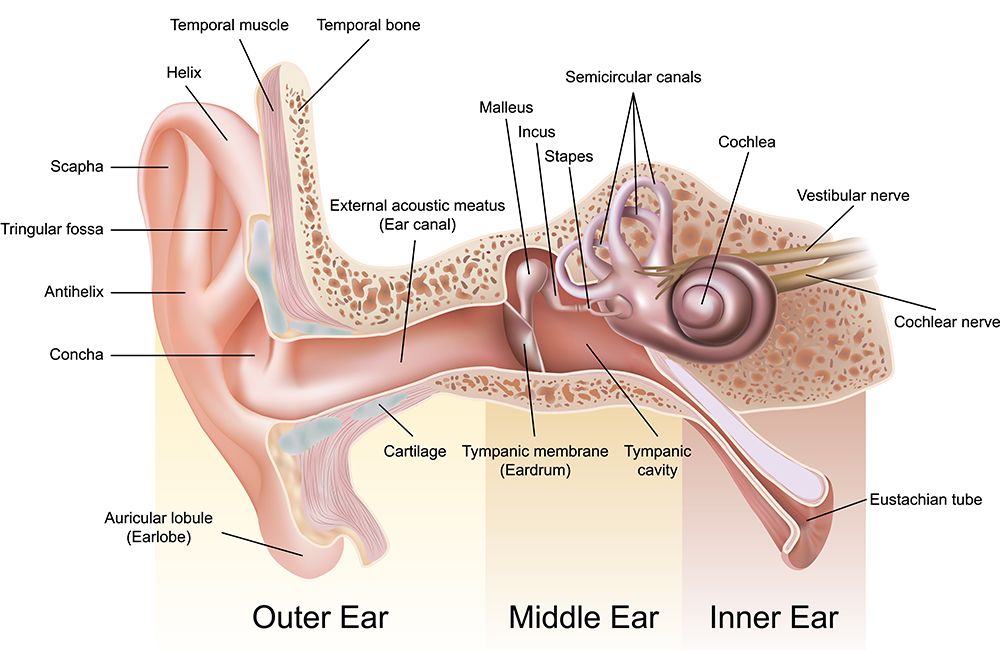The ear is divided in to 3 parts:
The outer Ear:
This consists of the Pinna (the external part we can hold) and the auditory canal, the canal that produces ear wax, the part we can see into. It ends at the ear drum or tympanic membrane.
The middle ear:
This consists of 3 tiny bones. Once sound vibrations reach the ear drum they are transmitted to the middle ear which is constructed by 3 small bones. These bones are joined forming a chain, transmitting sound vibrations from the ear drum to the inner ear.
The Inner ear:
The oval window is located at the end of the middle ear and the beginning of the inner ear. The inner ear is sometimes called the labyrinth because of its complex shape. There are two main sections in the inner ear: the bony labyrinth and the membranous labyrinth.
The inner ear controls the body’s sense of balance and contains the organ of hearing, the cochlea. Inside the cochlea, there are thousands of tiny hair cells. These hair cells change the vibrations into electrical signals which are then sent to the brain through the hearing nerve. The brain tells you that you are hearing a sound and what that sound is.
Hearing loss can also be caused by a perforated eardrum, an inner ear problem, or an auditory nerve problem.

